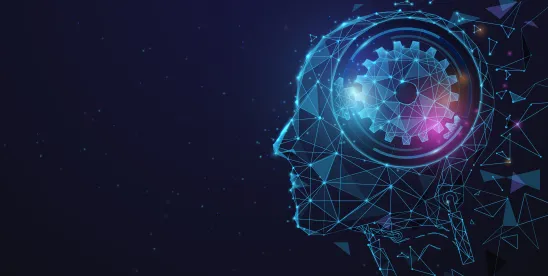If you’re a patent practitioner who works with innovation related to artificial intelligence, you’ll want to consider the Federal Circuit’s recent decision in Recentive Analytics, Inc. v. Fox. Corp. This decision is the first to explicitly consider patent eligibility in the context of the use of artificial intelligence.
The Federal Circuit affirmed the district court’s dismissal of Recentive’s complaint, holding that the claims were not eligible under Section 101. “This case presents a question of first impression: whether claims that do no more than apply established methods of machine learning to a new data environment are patent eligible. We hold that they do not.”
This case involved patents that addressed the scheduling of live events and optimizing network maps—in particular, what programs or content are displayed by a broadcaster’s channels in different geographic markets at a particular time. The district court dismissed the patent owner’s complaint for infringement because it found the patent claims were directed to ineligible subject matter under 35 U.S.C. § 101.
In analyzing the patent claims directed to event-scheduling, the Federal Circuit noted that the claims involved collecting data, an iterative training step, and an output step in which an optimized schedule is output, and an updating step in which the schedule is updated based on new data inputs.
The extent to which the specification discussed machine learning was fairly general: that a model can be trained using a set of training data that includes historical data from previous live events, that the machine learning model can be instructed to optimize a target feature such as event attendance, revenue, or ticket sales, and that “any suitable machine learning technique” can be used.
In analyzing the patent claims directed to network map optimization, the Federal Circuit noted that the claims involved collecting data, analysis of the data to create a network map, an updating step, and a using step. The specification included some information about the training data used to train the models and also noted that any suitable machine learning technique could be used.
Notably, under Step 2A, Prong 1 of the Alice test, the Federal Circuit found that the use of generic machine learning technology in carrying out the claimed methods was a conventional technique that does not represent a technical improvement. In discussing Prong 1, the Federal Circuit noted that neither the claims nor specification described any improvement to technology but instead only disclosed that machine learning is used in a new environment. In addition, nothing in the claims discussed a transformation of machine learning techniques applied within the context of network scheduling to something significantly more than generating event schedules and network maps.
This case established two important new guideposts: (1) applying machine learning techniques to a task, in and of itself, is likely not eligible under Section 101, and (2) detail in the specification and claims about a technical problem and detail about an improvement an invention provides to address this technical problem is important. More generally, this case suggests that machine learning techniques are just another tool to perform a task, and that using machine learning is (now) a bit like using a computer to perform a task —that is, not enough to get over the 101 hurdle.
In many respects, this case follows the intellectual underpinnings of Alice Corp. v. CLS Bank Int’l, in which the recitation of a generic computer was insufficient to transform a patent-ineligible abstract idea into eligible subject matter, particularly in view of the ubiquity of computer technology in our lives. With artificial intelligence becoming more ubiquitous, it is perhaps unsurprising to see the courts suggesting that the mere use of artificial intelligence is also insufficient to transform a patent-ineligible abstract idea into eligible subject matter.
In view of Recentive Analytics, innovators and practitioners who are pursuing patents that involve the use of machine learning models to perform a task may want to focus on the underlying technical problem under the existing techniques—whether it’s computational efficiency, resource utilization, poor results, some combination of all of that, or something else—and how the invention addresses these technical problems. It may also be helpful to avoid stating in the patent application that “any suitable machine learning technique can be used.”
For applications that relate to fundamental changes to the way machine learning models work, this decision should not impact strategies for obtaining patent protection.
Michael Lew also contributed to this article.



 />i
/>i
